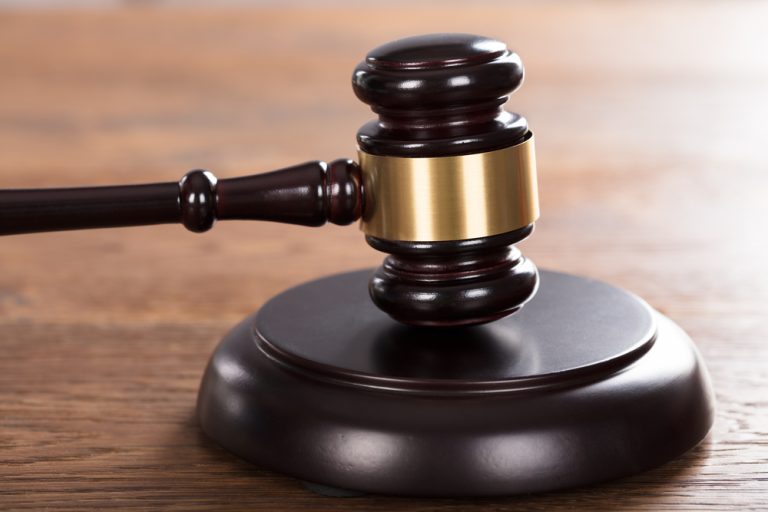Understanding what Medical Bills the Jury Sees: A Primer on Florida Law for Risk Managers
Understanding what Medical Bills the Jury Sees: A Primer on Florida Law for Risk Managers
One of the most important factors in determining the valuation of a general liability/personal injury claim is past and future medical bills. In order to understand the value of these numbers, one should be familiar with how Florida law treats past and future medical bills in the context of what is shown to the jury. Lawyers call this “blackboarding.”
A common misperception is that all medical expenses are created equally. Plaintiffs should only be entitled to what they paid or for what benefit they received through insurance or other plans. Think again. Florida case law is riddled with opinions (which have changed dramatically over time) applying the Collateral Source Rule and exceptions as to private pay plaintiffs, privately insured plaintiffs, and Medicare/Medicaid insured plaintiffs.
The Collateral Source Rule, codified at Florida Statute 768.76, in pertinent part, states that in any action where liability is determined and damages awarded, the court shall reduce the amount of award by the total amounts which have been paid for the benefit of the claimant. This might include private insurance payments, a contract to reduce health care expenses, health, sickness or disability insurance, a wage continuation plan, etc. Navigating this Section’s applicability to the different types of medical expenses plaintiffs seek to blackboard is complicated. Let’s take a look.
Private Pay/Out of Pocket Expenses
Whether past or future, as long as reasonable in need and expense, out of pocket expenses by the plaintiff for past or anticipated future medical bills are fully reimbursable. The jury will see the full amount billed for past medical bills and the full amount anticipated to be required for the plaintiff’s ongoing medical care. This make sense, because the idea is to make the plaintiff “whole.” In other words, where the plaintiff is successful in proving liability for an injury, the plaintiff should be fully compensated for anything he paid to cover those medical expenses.
Florida’s case law landscape regarding the treatment of past and future medical bills as it relates to private insurance, Medicare, and Medicaid becomes a little less easy to navigate.
Future Medical Bills
Florida law restricts recovery of future medical expenses to those expenses reasonably certain to be incurred. Testimony or evidence that certain treatments might possibly be obtained in the future cannot merit an award of future expenses. Further, there must be competent evidence to support the reasonableness of the costs of the future medical expense, and past medical expenses alone do not provide a reasonable basis for a jury to draw inferences to compute the cost of future medical care.
Private Insurance/Out of Pocket
We know that insurance companies negotiate payment terms with providers and receive a discounted rate for the payment of an insured’s care. But what does the jury see, especially, if the jury is not allowed to know a plaintiff is insured? Florida Courts have consistently made it clear that there is no right to discount, or setoff future damages that have not been incurred. A setoff is a deduction of an amount accounting for other payment sources; one such source is a collateral source. This reasoning stems from Florida’s definition of a collateral source (payments from which can be set off from the verdict) as benefits “available” to the plaintiff: those that have already been paid or that are presently due. In sum, there is no discount or setoff applied to future medical bills under private insurance plans or plaintiffs who are uninsured.
Medicare/Medicaid
In 2015, one of the most important developments in the evidentiary medical bill landscape occurred. In Joerg v. State Farm, the plaintiff sought to exclude evidence of collateral source benefits to which he was entitled, including discounted benefits under Medicare and Medicaid. The Florida Supreme Court held that the trial court properly excluded evidence of Joerg’s eligibility for future benefits from Medicare, Medicaid and other social legislation as collateral sources. The Court reasoned, among other rationales, that it was entirely speculative to attempt to calculate the damage award based on benefits that a plaintiff has not yet received and may never receive, should either the plaintiff’s eligibility change or the benefits cease to exist.
Past Medical Bills
In general, there are three approaches to the Collateral Source Rule across the U.S., which influence whether evidence of past medical bills are admissible and may be considered by a jury where private insurance is involved. Maximilian Atchity, Is Universal Healthcare Really the Death of Medical Expense Awards? The Current and Future State of the Collateral Source Rule, 73 BAYLOR L. REV. 642, 661 (2021).
- The “Amount Billed” approach, adopted in thirteen jurisdictions, allows plaintiffs to recover the full amount billed from the provider. Id.
- The “Amount Paid” approach, adopted by six jurisdictions, states that plaintiffs can only recover the actual amount paid for medical services. Id. at 664.
- And the “Reasonable Value” approach, adopted by thirteen jurisdictions and allowing a plaintiff to recover the “reasonable value” of their medical expenses. Id. at 666.
However, even within these three categories, there are variations in implementation among the states that employ them. For example, both Missouri and Florida are considered “Amount Paid” jurisdictions. Id. at 664. However, in Missouri, evidence of the amount actually paid by a collateral source may be presented to the jury for consideration, whereas in Florida, evidence of the collateral source may not be given to the jury, but can provide the basis for a post-verdict reduction of a medical damages award. MO. REV. STAT. § 490.715 (2017); Goble v. Frohman, 901 So.2d 830, 835 (Fla. 2005). Additionally, whether a plaintiff is entitled to benefits such as Medicare and Medicaid complicates the issue, although most states apply their approach to the Collateral Source Rule to these contexts. Id. at 668.
Private Insurance
Under Florida’s Collateral Source Rule, the jury is not allowed to see evidence of collateral sources in determining its verdict. Florida courts have consistently ruled that a privately insured plaintiff may enter evidence of all of its past medical bills, as billed by the provider, without regard to reductions, discounts, or negotiated rates. Why is this problematic for defendants? For example: plaintiff introduces $100,000 of past medical bills billed to his insurance carrier. Insurance carrier pays a negotiated rate of $40,000. For the purpose of allocating pain and suffering damages, assume the jury multiples the value the past medical bills three times. This means the jury, not knowing about the reduction, awards the plaintiff $400,000 instead of $160,000. The inflated medical bills can really make a difference. Of course, the Court will, post-verdict, reduce the award by the collateral source payment: in this example, $40,000. That means the plaintiff goes home with $360,000 in past medical expenses alone.
In the jurisdictions employing the “Amount Billed” approach, including Colorado, Washington, D.C., and Georgia, the court would not reduce this jury award whatsoever. In these states, any evidence of payments by private insurance is inadmissible and thus may not be considered by the jury in making their award determination nor by the court for the purposes of reduction. Id. at 661. In “Reasonable Value” jurisdictions, including Illinois, Washington, and Ohio, the outcome often depends on which evidence the plaintiff chooses to present to the jury. The Supreme Court of Ohio in Robinson v. Bates, for example, held that a plaintiff may present “both the amount originally billed by the provider and the amount paid by the insurer” to prove the reasonable value of medical treatment. 857 N.E.2d 1195, 1196 (Ohio 2006). Proof of the amount billed or paid constitutes prima facie evidence of the reasonableness of these charges. Id. at 1197. Thus, plaintiffs may choose which evidence to present to the jury, and the jury can then use all of this evidence to determine a reasonable award of medical expenses.
Medicaid/Medicare
In the years after Joerg, Florida courts have consistently confined the Joerg ruling to the admissibility of evidence regarding plaintiff’s future medical expenses covered by Medicare or Medicaid. Previously, however, we didn’t have black letter law that affirmed the manner in which most practitioners were operating: that only amounts Medicare or Medicare had paid as opposed to what was billed was admissible as to past medical expenses. In Florida’s latest Supreme Court ruling on the medical bills conundrum, Dial v. Calusa Palms Master Association, the Court confirmed that claimants may only submit evidence of past medical bills actually paid by Medicare as opposed to the unadjusted amount.
Generally, states maintain their approach to the Collateral Source Rule when determining whether payments made by Medicare or Medicaid are admissible or may be considered by the jury. In other words, most of the states treat evidence of Medicare and Medicaid payments the same as private insurance payments. However, some jurisdictions, such as Delaware, New Jersey, and Michigan, do not follow their private insurance Collateral Source Rule approach, finding Medicare and Medicaid payments outside the scope of the Collateral Source Rule because they are government benefits. Katherine L. Vojas & Jeffrey E. Atkinson, Collateral Source: Constant Confusion, US Law Magazine, Spring 2022, at 25. Further complicating the Medicare/Medicaid issue are those states, such as Colorado, which apply their Collateral Source Rule to Medicaid, but not Medicare. Id. Overall, it appears the law in this area is generally unsettled and many states have yet to rule on the issue.
Unanswered Questions
The landscape of Florida’s evidentiary treatment of medical bills continues to evolve, and though the Court has recently provided additional guidance, questions remain. How will the courts treat the admissibility of Medicare Advantage Plan Medical Payments (Medicare Advantage Plan provides Medicare Coverage through a private-sector insurance company)? The same question applies as to the admissibility of Medicare Supplement or Medigap Plans, in which an insured pays a private insurer to cover the gaps not fully covered by Medicare A and B. Finally, how will the courts treat the increasingly popular Letters of Protection favored by the plaintiff’s bar to inflate the cost of medical care with an agreement to pay the provider a reduced amount from any settlement?
The Dial case clarified any uncertainty and confirmed claimants may only submit evidence of past medical bills actually paid by Medicare as opposed to the unadjusted amount, however, Justice Polston’s concurring opinion (not binding) indicated that he favored limiting all past medical bill evidence to the amount that the provider was willing or required to accept, not just those paid by Medicare. This may suggest that our current Florida Supreme Court may be willing to change the forecast of the admissibility of the admissibility of medical expenses in Florida once again.
This article was originally published in the July/August issue of Public Risk Magazine.








